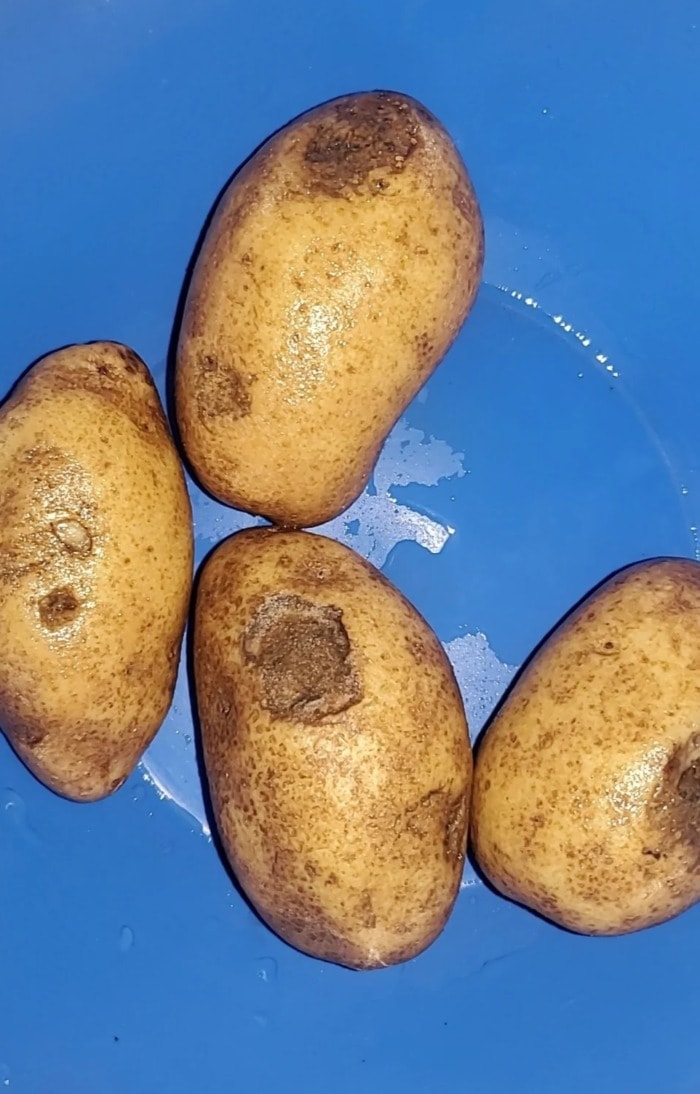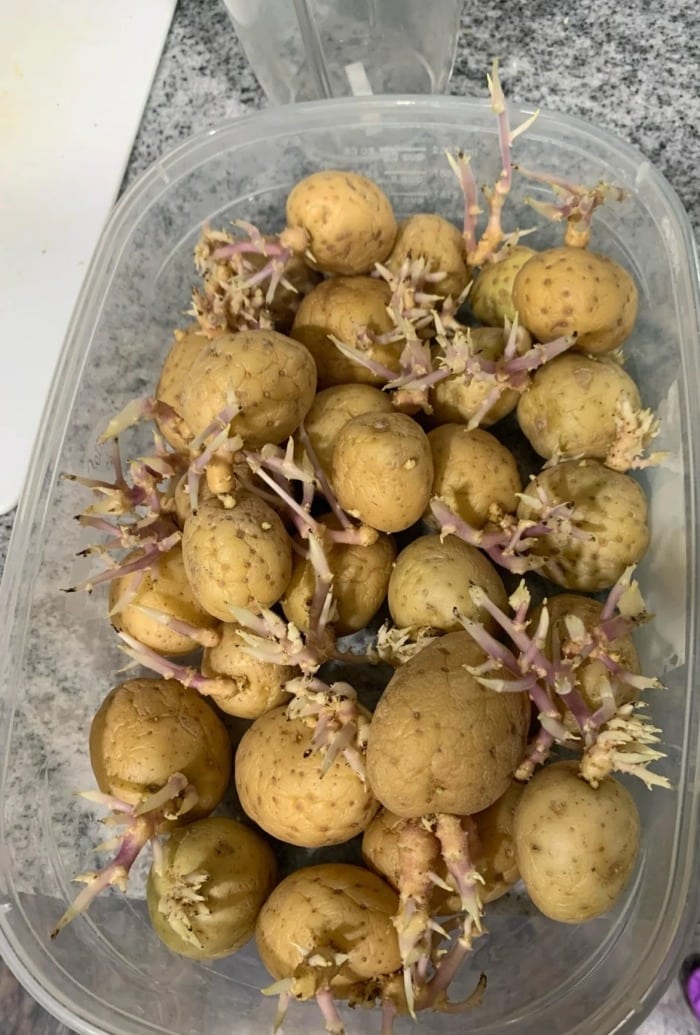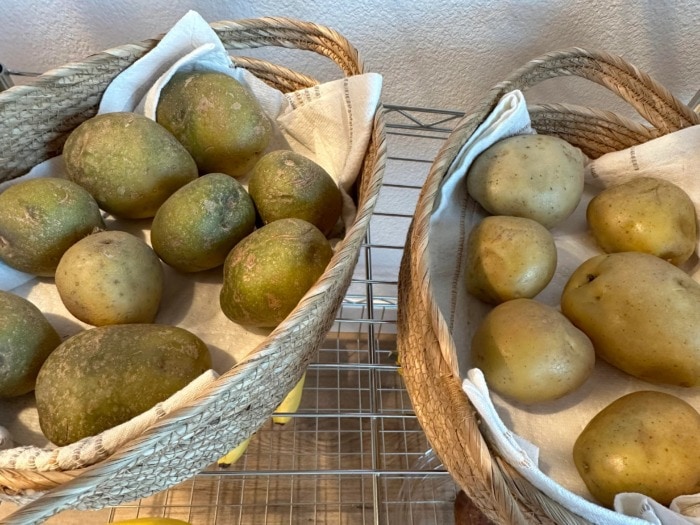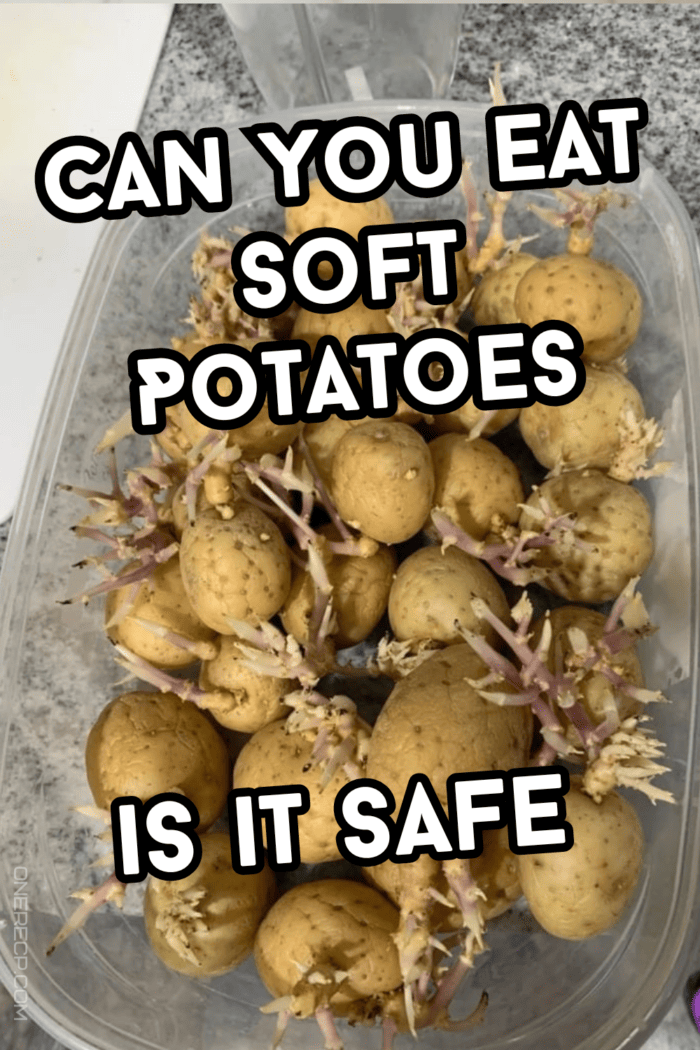Fresh potatoes are typically firm to the touch and don’t have any visible bruises or other blemishes.
However, as they age they slowly lose their firmness and become soft.
Even though this may seem like a bad sign, you can still eat soft potatoes or ones that have grown sprouts as long as they’re not overly squishy.
Keep reading to find out when it’s a good idea to eat soft potatoes and how to tell if they’re bad.
Can you consume soft potatoes?
If you’ve ever kept potatoes for a long period of time, then you’ve probably noticed they start to become soft over time.
This happens because potatoes gradually lose their moisture and their cell structure begins to deteriorate.
Nevertheless, there’s a huge difference between potatoes that are a little soft and ones that are squishy as a stress ball.
Potatoes that are slightly soft, meaning ones that give off little resistance to touch but still retain their firmness, are safe to eat.
If you’re bothered by their texture, you can simply cut off the soft bits with a knife or use them to make a soup.
Here’s a recipe idea: Chicken Soup With Spaghetti Noodles
Anyway, in case the potatoes have sprouted, you’ll first need to remove the sprouts with a paring knife or a peeler.
Potato sprouts contain high concentrations of a glycoalkaloid called solanine, which can cause food poisoning.
Spongy potatoes, on the other hand, should be discarded as their structural integrity is entirely damaged.
Eating them could cause stomach cramps, nausea and other health complications.
How to tell if potatoes are bad?
Apart from textural changes, you can tell a raw potato has gone bad by inspecting its color and smell.
Fresh potatoes are characterized by having a neutral or earthy aroma.
If you notice any moldy or musty odors coming off from your potatoes, you should throw them away.
Another telltale sign that points to spoilage is the presence of blemishes.

Blemishes could sometimes be caused by poor handling, but they’re most often a result of rot or disease.
Therefore, it’s best to discard any tubers that have imperfections and look out of the ordinary or at least cut out the blemishes.
Speaking of blemishes, you should also check potatoes for the growth of sprouts.

by 420pharm
Sprouts grow from little indentations called potato eyes and suck out the sugar and nutrients from the tuber.
This changes the texture of a potato causing it to wrinkle and become overly soft.

by SidePibble
These changes become more pronounced when the sprouts grow longer than an inch.
If they’re shorter than that, you can remove them and salvage your tubers.
Another thing that you should look out for is a green tint on the surface or flesh of potatoes.

by Veggies4Lee
The green color is caused by the accumulation of chlorophyll, which in itself is pretty harmless.
Similarly to sprouts, however, the green bits also contain solanine which can be toxic in large amounts.
These color changes also affect red potatoes, but they’re expressed as dark patches on the skin.
If the potatoes are cooked, you should also inspect them for any signs of mold growth or foul odors.
What can happen if you eat potatoes that are bad?
Eating spoiled potatoes can lead to food poisoning and cause a variety of symptoms ranging from mild to severe.
In mild cases, you are likely to experience nausea, stomach cramps or headaches.
Even though they’re unpleasant, these symptoms will go away on their own without the need for medical assistance.
In severe cases, however, the nausea might cause vomiting and be accompanied by other symptoms such as diarrhea and fever.
The combination of these symptoms could cause extreme dehydration and require hospitalization.
Therefore, you should seek medical help right away if you’re experiencing any of these symptoms.
How to properly store raw potatoes?
The best way to store raw potatoes is to keep them in a cool dry place such as a cellar, garage or a pantry.
You should avoid exposing them to direct sunlight or keeping them in a humid environment as this will increase sprouting and the development of glycoalkaloid toxins.
Moreover, you should leave potatoes in an open bowl or a mesh bag so there’s enough air circulation.
Having said that, you should never leave raw potatoes in the fridge or freezer.
Storing fresh potatoes in the fridge makes them soft and increases their amount of sugar.
The increased sugar content can lead to browning and the accumulation of a potentially carcinogenic compound called acrylamide.
You should also keep in mind that it’s best to store potatoes away from onions or other vegetables.
Some vegetables produce a gas called ethylene which increases the chance of spoilage and sprouting.
My short recap
There’s no need to fret if your potatoes have become soft.
As long as they’re not overly squishy, you’ll still be able to salvage them and turn them into a tasty meal.
Just make sure you thoroughly inspect them for any signs of spoilage before you head to your kitchen.
